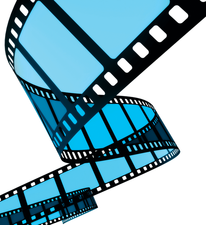Processing RAW files with RawTherapee
Digital Darkroom

© raven, Fotolia
RAW format images offer more options for editing than JPEG formats – RawTherapee brings this potential to Linux.
Just imagine the disappointment: When you get back from vacation and check your snapshots on your PC, you find out that your favorite image is color cast and the darker sections totally lack contrast. If you used the typical JPEG format, even the most capable image manipulation program would offer little help in restoring the shots. RAW format images, on the other hand, contain far more image data, which provides greater opportunity for post-processing (see the box titled "RAW Digital Negatives"). For example, you can correct underexposed images without affecting the quality of the original.
Camera manufacturers such as Canon and Nikon use proprietary RAW formats, and you typically need a commercial Windows program to open them. To avoid the Windows trap, try the freeware program RawTherapee [1] (Figure 1), which is based on DCraw [2]. RawTherapee can open nearly any RAW format, and it has a huge set of manipulation features. The project website [3] compares RawTherapee with other RAW converters. The program is also useful for editing JPEG- or PNG-formatted files.
In this article, I describe the stable version 2.3. A beta version of the 2.4 release is also available for download. Version 2.4 offers comprehensive metadata support (Exif and IPTC), that 2.3 lacks.
[...]
Buy this article as PDF
(incl. VAT)
Buy Linux Magazine
Subscribe to our Linux Newsletters
Find Linux and Open Source Jobs
Subscribe to our ADMIN Newsletters
Support Our Work
Linux Magazine content is made possible with support from readers like you. Please consider contributing when you’ve found an article to be beneficial.

News
-
Parrot OS Switches to KDE Plasma Desktop
Yet another distro is making the move to the KDE Plasma desktop.
-
TUXEDO Announces Gemini 17
TUXEDO Computers has released the fourth generation of its Gemini laptop with plenty of updates.
-
Two New Distros Adopt Enlightenment
MX Moksha and AV Linux 25 join ranks with Bodhi Linux and embrace the Enlightenment desktop.
-
Solus Linux 4.8 Removes Python 2
Solus Linux 4.8 has been released with the latest Linux kernel, updated desktops, and a key removal.
-
Zorin OS 18 Hits over a Million Downloads
If you doubt Linux isn't gaining popularity, you only have to look at Zorin OS's download numbers.
-
TUXEDO Computers Scraps Snapdragon X1E-Based Laptop
Due to issues with a Snapdragon CPU, TUXEDO Computers has cancelled its plans to release a laptop based on this elite hardware.
-
Debian Unleashes Debian Libre Live
Debian Libre Live keeps your machine free of proprietary software.
-
Valve Announces Pending Release of Steam Machine
Shout it to the heavens: Steam Machine, powered by Linux, is set to arrive in 2026.
-
Happy Birthday, ADMIN Magazine!
ADMIN is celebrating its 15th anniversary with issue #90.
-
Another Linux Malware Discovered
Russian hackers use Hyper-V to hide malware within Linux virtual machines.

